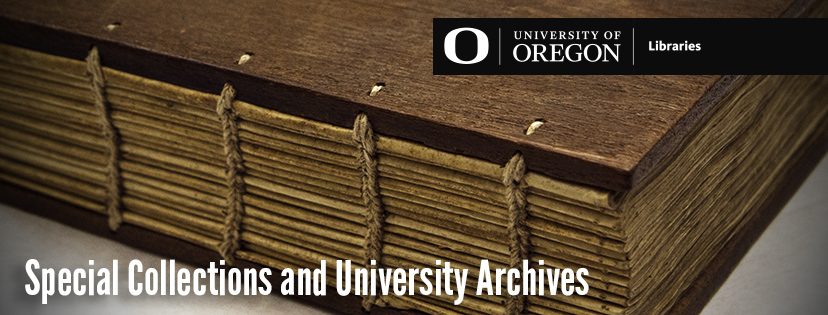New Finding Aid | George Alan Connor Esperanto Collection
Special Collections and University Archives is pleased to announce a newly updated finding aid published for the George Alan Connor Esperanto collection (Bx 178). The finding aid is available on Archives West.

The George Alan Connor Esperanto collection was compiled by American Esperantist George Alan Connor and includes his collection of books, serials and periodicals, personal papers, and artifacts related to Esperanto. The collection includes publications in English on the topic of Esperanto, as well as pamphlets, advertisements, and artifacts published in Esperanto and braille Esperanto.
The collection also includes papers, programs, guidebooks, ephemera from annual World Esperanto Congresses and national organizations. Artifacts from conferences are also included, such as pins, badges, ribbons, flags, and banners. George Alan Connor also collected the papers of notable American Esperantists, including the personal papers and correspondence of Charles H. Briggs and Ernest G. Dodge. Lastly, the collection includes books, serials, and pamphlets on the topic of linguistics and other artificial world languages such as Ido, Occidental, Antido, and Interlingua.

George Alan Connor was editor and moving force of American Esperanto Magazine for twenty years. Connor was born in Waterbury, Nebraska in 1895 and died in Portland, Oregon in 1973. His early printing experiences earned him a living while in normal school in La Crosse, Wisconsin; a Washington post while in the U.S. Army; a graphic arts position in the New York City schools; and an opportunity to apply his trade in the Soviet Union, 1930-1932. Esperanto had been an early interest and upon his return from the Soviet Union he felt the strong need for an international language. His enthusiasm for Esperanto led him to study it seriously, teach the language, and head tours for Esperantists through the Soviet Union and Western Europe. From the mid-1940s, George Connor and his wife Doris concentrated their energies on promoting Esperanto in America. They were active in the New York Esperanto Association of North America; they wrote for and edited the American Esperanto Magazine Amerika Esperantisto and served as its officers.

